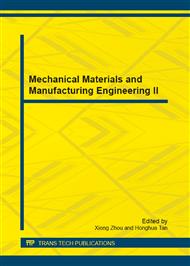p.331
p.337
p.343
p.349
p.355
p.361
p.365
p.370
p.379
Abrasion Wear of Heterogeneous Materials
Abstract:
This research is devoted to the decision of a problem of modeling the wear process of concrete. In paper presents a wear model of concrete as heterogeneous material on the basis of the theoretical and experimental contact mechanics methods approach. The model predicts that its abrasion strength depend on physical and geometrical characteristics of cement matrix and aggregate. The theoretical modeling of a surface with the strengthened ore softening areas is applied to optimization of concrete structures. The experimental results support these theoretical predictions.
Info:
Periodical:
Pages:
355-360
Citation:
Online since:
December 2012
Keywords:
Price:
Сopyright:
© 2013 Trans Tech Publications Ltd. All Rights Reserved
Share:
Citation:


